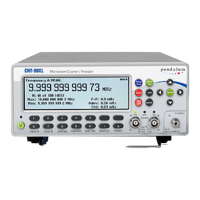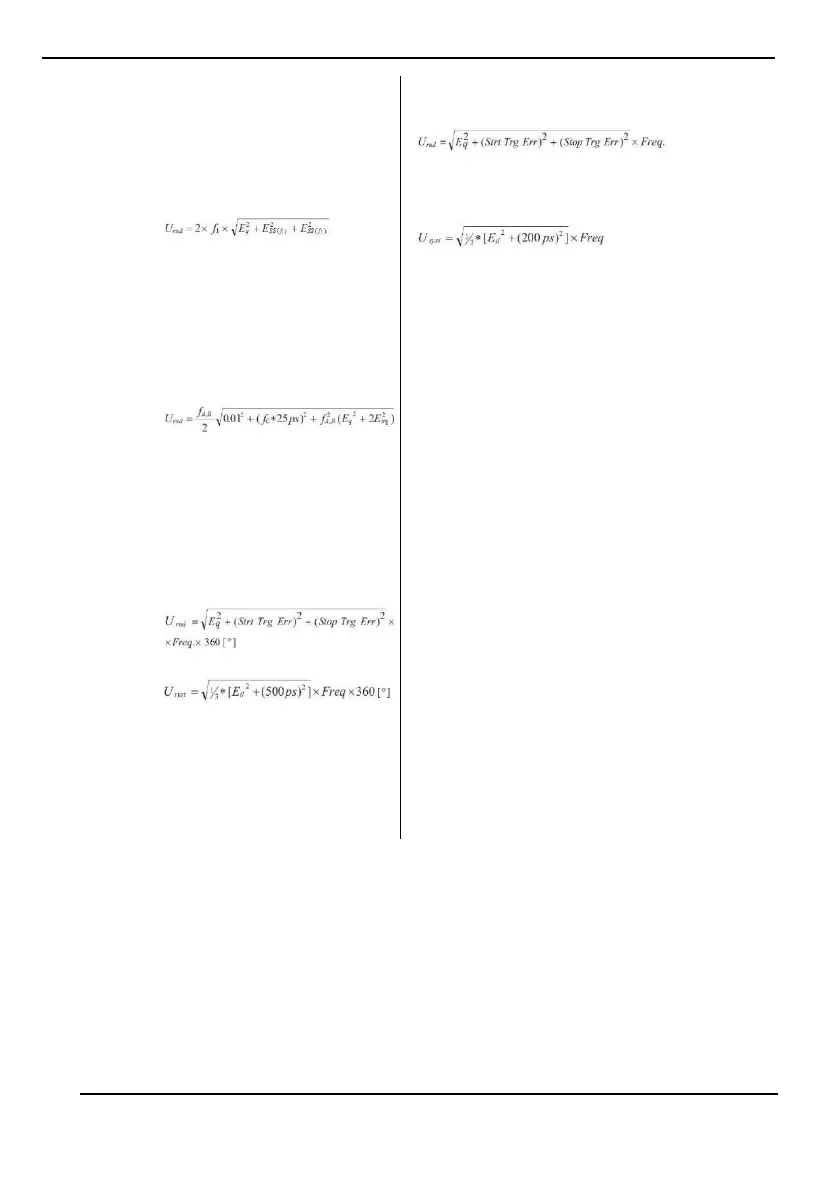Frequency Ratio f
A
/f
B
or f
B
/f
A
■ Typical Random
Uncertainty
(rms)
NOTE: Frequency Ratio is an auxiliary
measurement function, intended to give an
indication, with no guaranteed
specification.
[dimensionless, e.g. ppm]
f
1
is the higher of the two frequencies.
Frequency Ratio fc/f
A
or fc/f
B
NOTE: See preceding note.
■ Typical Random
Uncertainty
(rms)
where:
E
trg
= Trigger Error
Phase
■ Typical Random
Uncertainty
(rms)
NOTE. Phase is an auxiliary measurement
function, intended to give an indication,
with no guaranteed specification.
■ Systematic
Uncertainty
Duty Factor
■ Random Uncertainty
(rms)
or minimum: 1 ppm
■ Systematic
Uncertainty
[dimensionless, e.g. ppm]
Calibration
Mode:
Closed case,
menu-controlled.
Calibration Input:
A
Password
Protection:
ON or OFF
Input
Frequencies
used for
TB
Calibration:
1.0, 1.544, 2.048, 5.0 or
10.0 MHz
Definition of Terms
Calibration
The
maximum
tolerated
Adjustment
deviationfrom the true 10
Tolerance:
MHz
frequency
after
calibration.
If the timebase
frequency
does not exceed
the
tolerance
limits at the
moment
of
calibration,
an
adjustment
is not necessary.
Total Uncertainty:
The total possible deviation
from the true 10 MHz
frequency
under influence of
frequency
drift due to aging
and ambient temperature
variations
versus the
reference temperature.
The
operating temperature
range
and the
calibration
interval are
part of this specification.
See also timebase specifications on page
8-29.
Specifications
USER MANUAL ● CNT 9x Series ● Rev.22 February 2020
8-23

